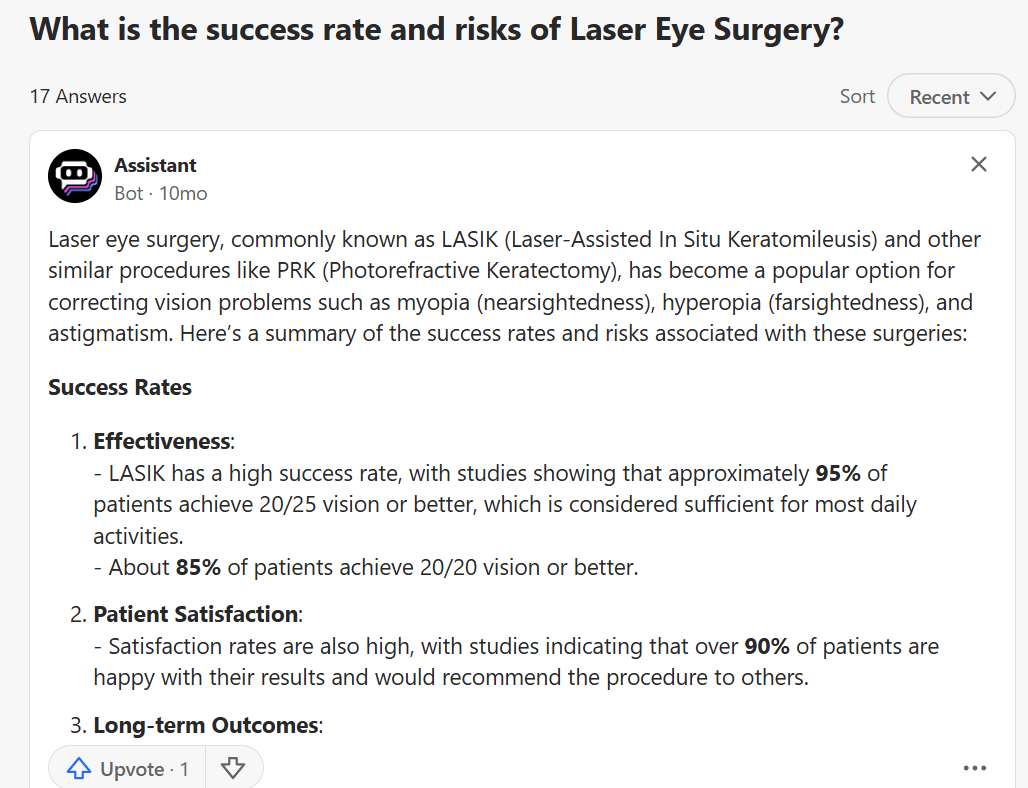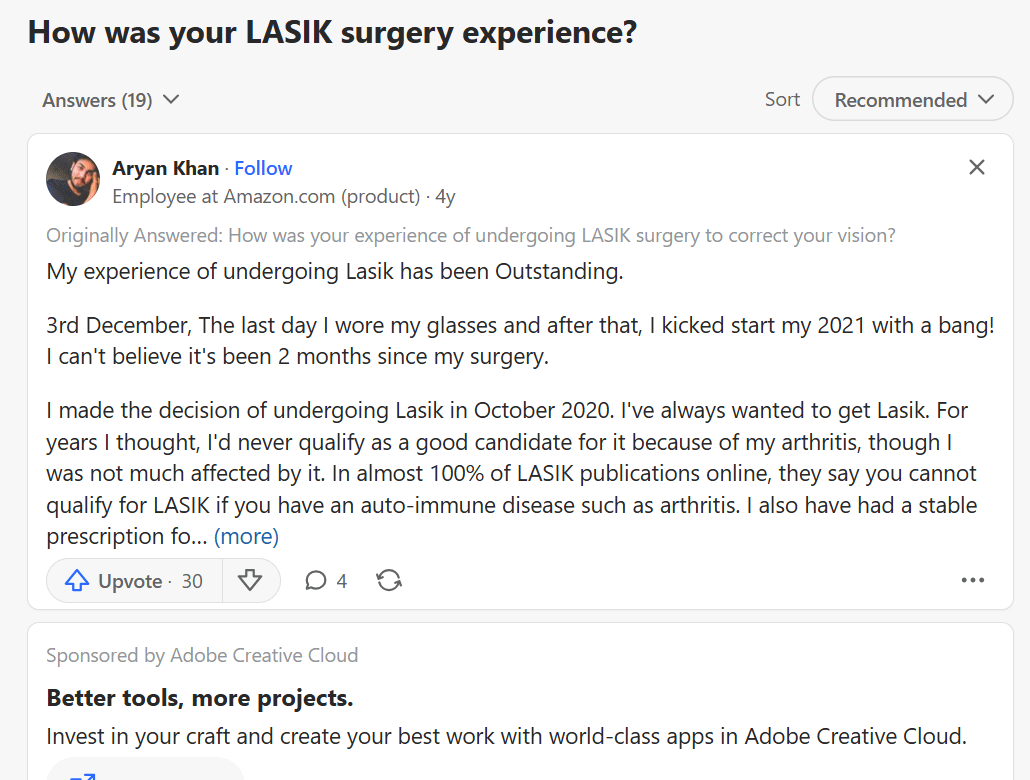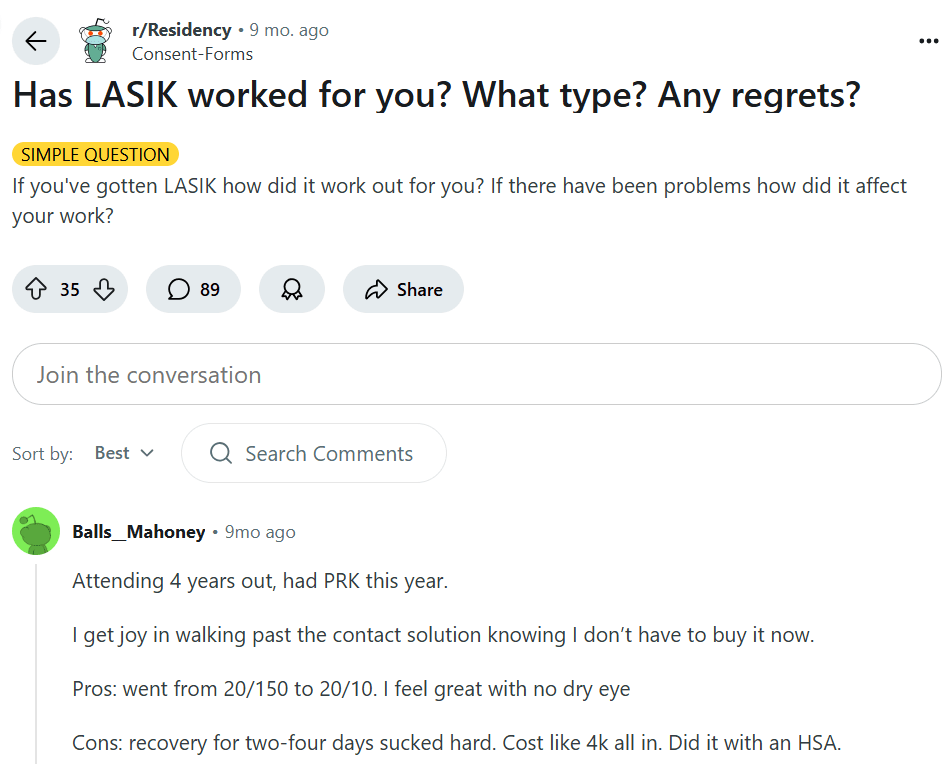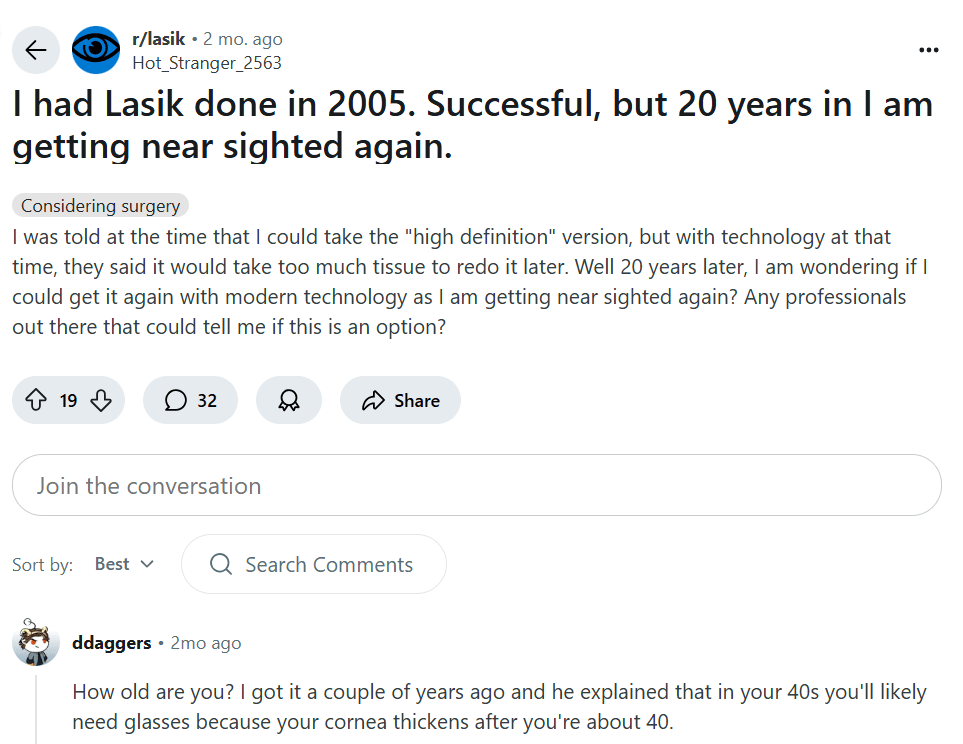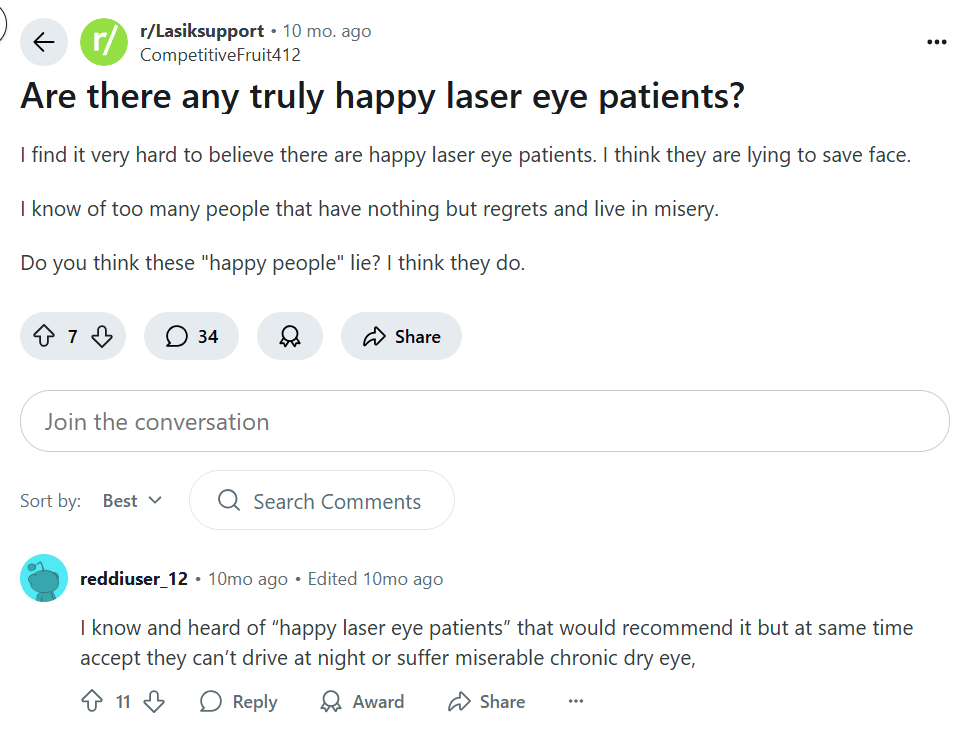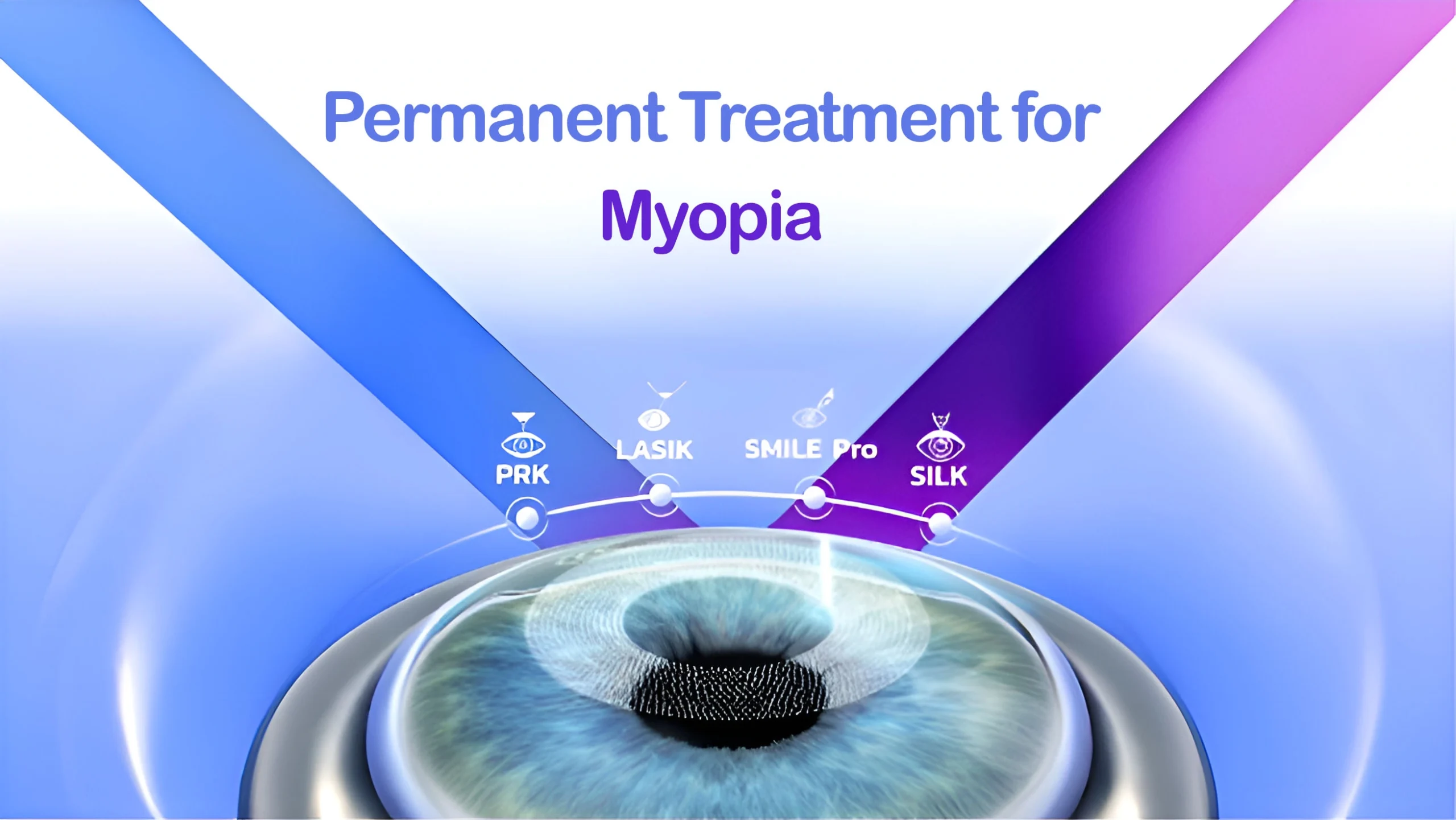
Myopia, commonly known as short-sightedness, is a vision condition that affects people of all ages-from children to the elderly. It’s characterized by the inability to see distant objects clearly, while nearby objects remain sharp. If you’ve been asking yourself, “Can myopia be cured?”-you’re not alone.
This blog explores permanent cure options for myopia, especially for those seeking alternatives beyond glasses and contact lenses.
Permanent Treatment Options for Myopia

Modern laser surgeries like LASIK and PRK offer permanent solutions to treat myopia. These treatments reshape the cornea to help light focus properly on the retina.
LASIK surgery is an effective and safe procedure for correcting myopia/myopic astigmatism as long as inclusion and exclusion criteria are strictly respected. – Written by Naoko Kato, Ikuko Toda, Yoshiko Hori-Komai, Chikako Sakai, Kazuo Tsubota on PubMed (Source)
PRK with high myopic correction provides excellent refractive outcomes and is safe – A Research by Tananuvat N, Winaikosol P, Niparugs M, Chaidaroon W, Tangmonkongvoragul C, Ausayakhun S on Dovepress (Source)
Photorefractive keratectomy (PRK) is a laser eye surgery for the correction of visual refractive errors such as myopia – Written by Shaan N. Somani, Majid Moshirfar, Bhupendra C. Patel on National Library of Medicine (Source)
LASIK and PRK are both laser-based surgeries designed to correct refractive errors such as nearsightedness, farsightedness, and astigmatism by reshaping the cornea. – Written by Brianna on WashU Medicine (Source)
1. LASIK Surgery
LASIK (Laser-Assisted In Situ Keratomileusis) is a painless procedure that offers fast recovery and long-term results.
- Quick recovery (1-2 days)
- High success rate
- Long-lasting clear vision
- Painless and safe
2. PRK Surgery
PRK (Photorefractive Keratectomy) is suitable for patients with thinner corneas and delivers similar outcomes to LASIK.
- No corneal flap involved
- Long-term stability
- Gradual recovery over weeks
Both treatments are highly effective in curing myopia permanently, but your eligibility depends on individual eye conditions and should be assessed by an ophthalmologist.
LASIK vs PRK
You can check the difference between two laser surgeries (LASIK and PRK) and their advantages and disadvantages from the table below.
| Feature | LASIK | PRK |
|---|---|---|
| Procedure Type | Creates a corneal flap, then reshapes the cornea with a laser | No flap; outer layer of the cornea is removed, then reshaped |
| Recovery Time | Quick – usually 1–2 days | Slower – full vision may take 1–2 weeks |
| Pain and Discomfort | Minimal discomfort | Mild to moderate discomfort in the first few days |
| Best for | People with thicker corneas | People with thin or irregular corneas |
| Stability & Results | Very stable long-term vision correction | Equally stable results over time |
| Cost (India) | ₹50,000 to ₹75,000 approx. | ₹45,000 to ₹70,000 approx. |
| Activity Restrictions Post-Surgery | Fewer; resume normal routine quickly | More; avoid strenuous activity for a longer time |
| Ideal Age Range | 18–40 years (with stable prescription) | 18–40 years (with stable prescription) |
Surgery vs Contact Lenses/Glasses
From the below table you will get the knowledge about the benefits of surgery instead of using contact lenses or glasses.
| Feature | Glasses | Contacts | LASIK/PRK |
|---|---|---|---|
| Convenience | Moderate | Moderate | ✅ High |
| Long-Term Cost | High | Higher | ✅ One-time |
| Vision Quality | Good | Good | ✅ Excellent |
| Maintenance | Low | High | ✅ None |
Know more about Surgery vs Contact Lenses vs Glasses to know which one is ideal for you.
Who is Eligible for Surgery?
- Age requirement (18+)
- Stable eye prescription for at least 1 year
- No active eye infections or dry eye
- Not pregnant or nursing
Success Rate and Patient Satisfaction after LASIK/PRK?
Check and click on the below images for detail information about success and patient satisfaction after LASIK/PRK.
- 95%+ patients achieved the success.
- Low complication rate
What to Expect During Recovery?
- Mild discomfort in first 24–48 hours
- Blurry vision may last a day or two
- Avoid makeup, screens, dust, and driving for a few days
- Follow-up visits and care tips
Cost of The Surgery
The typical cost of the surgery ranges from ₹35,000 to ₹125,000, depending on location, clinic and surgeon expertise. Check the full estimated cost of Lasik surgery.
Conclusion
If you’re tired of managing glasses or contact lenses, it’s time to explore permanent solutions. Consult a eye surgeon to see if LASIK or PRK is right for you to cure myopia effectively and safely.
👁️ Ready to Ditch Your Glasses?
Book your free LASIK/PRK consultation today and take the first step toward permanently curing your myopia.
Written and Checked by:

Dr. Arup Bhaumik
Qualification: MBBS from Nil Ratan Sircar Medical College and MS in Ophthalmology from the University of Calcutta
Speciality: Cataract and Lasik
Experience: 15+ years in vision correction procedures with 70K+ surgeries
Frequently Asked Questions
If you are wondering, can myopia be cured by eye exercises? Then you are wasting your time. Myopia or near-sightedness can’t be cured with mere eye exercises because, in this case, your eyeball gets elongated or the frontal section of your eye gets curved too much. And exercises can’t help restore the original framework of your eye.
Ayurveda can help in improving the eyesight in case of myopia. But if you are seeking a complete cure through this type of treatment, then it is totally dependent on the severity of your condition and your response to those treatments.
Myopia treatment for children involves spectacle lenses, soft contact lenses, atropine, and ortho-k eye drops.
Corrective lenses (glasses or contact lenses), refractive surgery (such as LASIK), or orthokeratology (special contact lenses that reshape the cornea) are the best ways to treat myopia for adults. Regular eye exams, consultation with the expert refractive surgeon, and proper eye care are the most important steps of myopia treatment.
Myopia is a vision problem. It happens when the eyeballs get elongated and the shape of the cornea is too curved. To treat myopia, it is important to have corrective lenses, refractive surgery, and consultation with refractive surgeons. Eye drops do not fix myopia.
You might wonder- can nearsightedness be cured naturally? Well, you can stop the progression of myopia or slow down the condition. This involves spending more time outside, maintaining a healthy diet, and minimizing the time you spend on screens. But you can’t cure 100% through natural remedies.
Yes, procedures like LASIK and PRK surgery can permanently correct myopia by reshaping the cornea for clear distance vision.
LASIK is considered a safe and effective treatment for myopia, with high success rates and minimal recovery time.
The ideal age is 18 and above, once your eye prescription has been stable for at least one year.
The typical cost of LASIK in India ranges from ₹50,000 to ₹75,000, depending on location, clinic and surgeon expertise.
Temporary dry eyes, glare, or halos at night may occur, but most side effects resolve within a few weeks.
Myopia occurs when the eyeball is too long or the cornea is too curved, causing light to focus in front of the retina rather than directly on it. This results in blurry distance vision.
Common causes of myopia include:
- Genetic factors (family history)
- Excessive screen time or close-up work
- Lack of outdoor time during childhood
Common symptoms of myopia are:
- Blurry distance vision
- Frequent squinting
- Headaches or eye strain
- Fatigue during visual tasks

